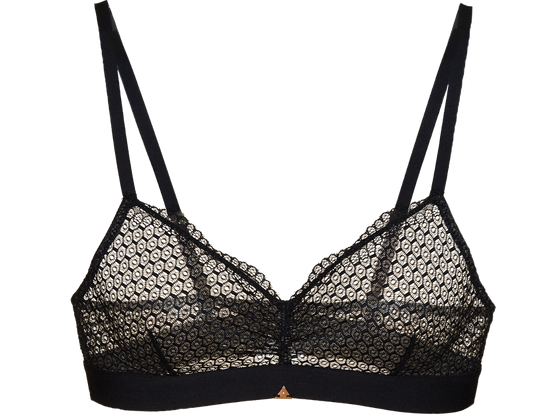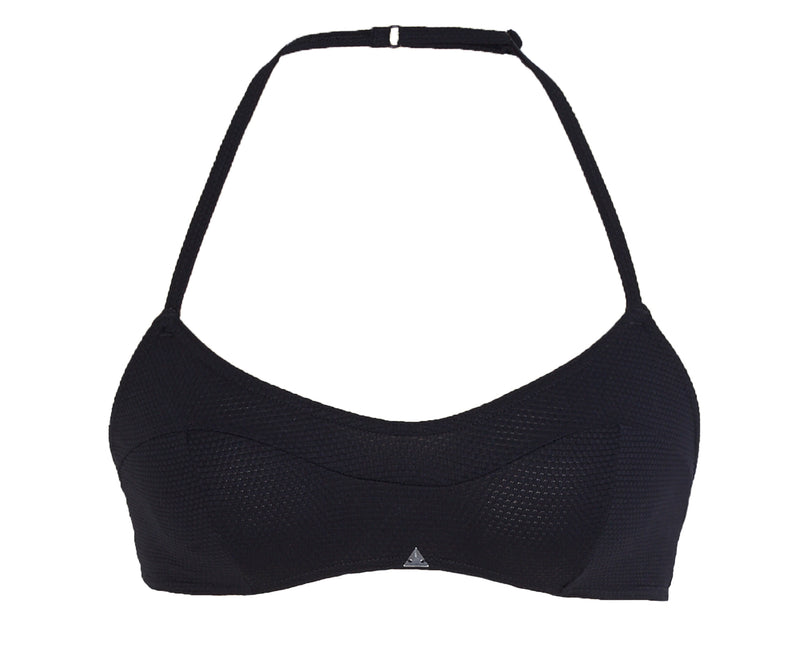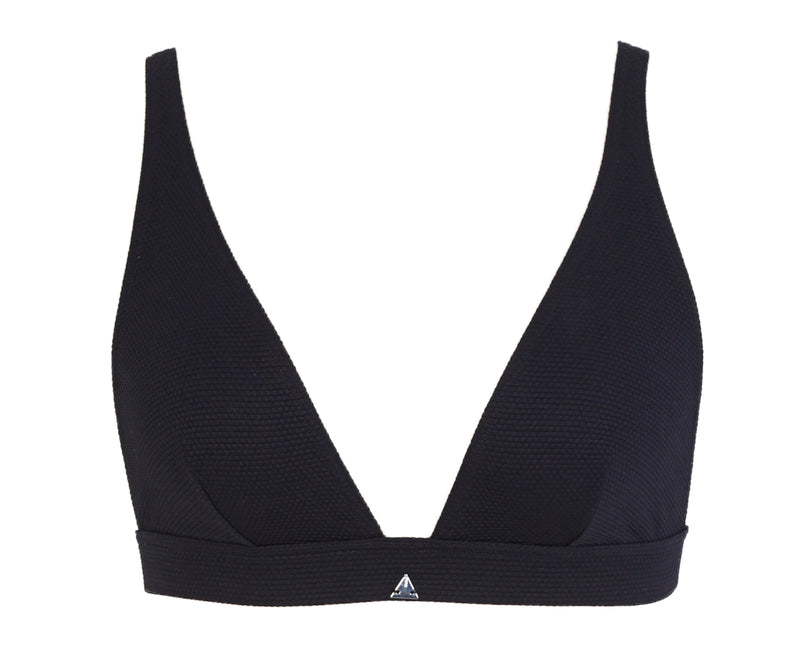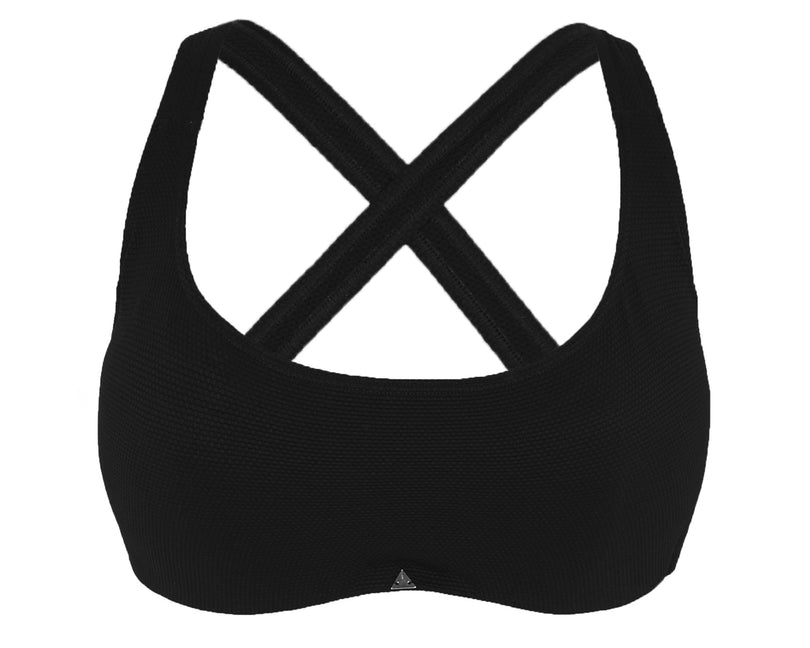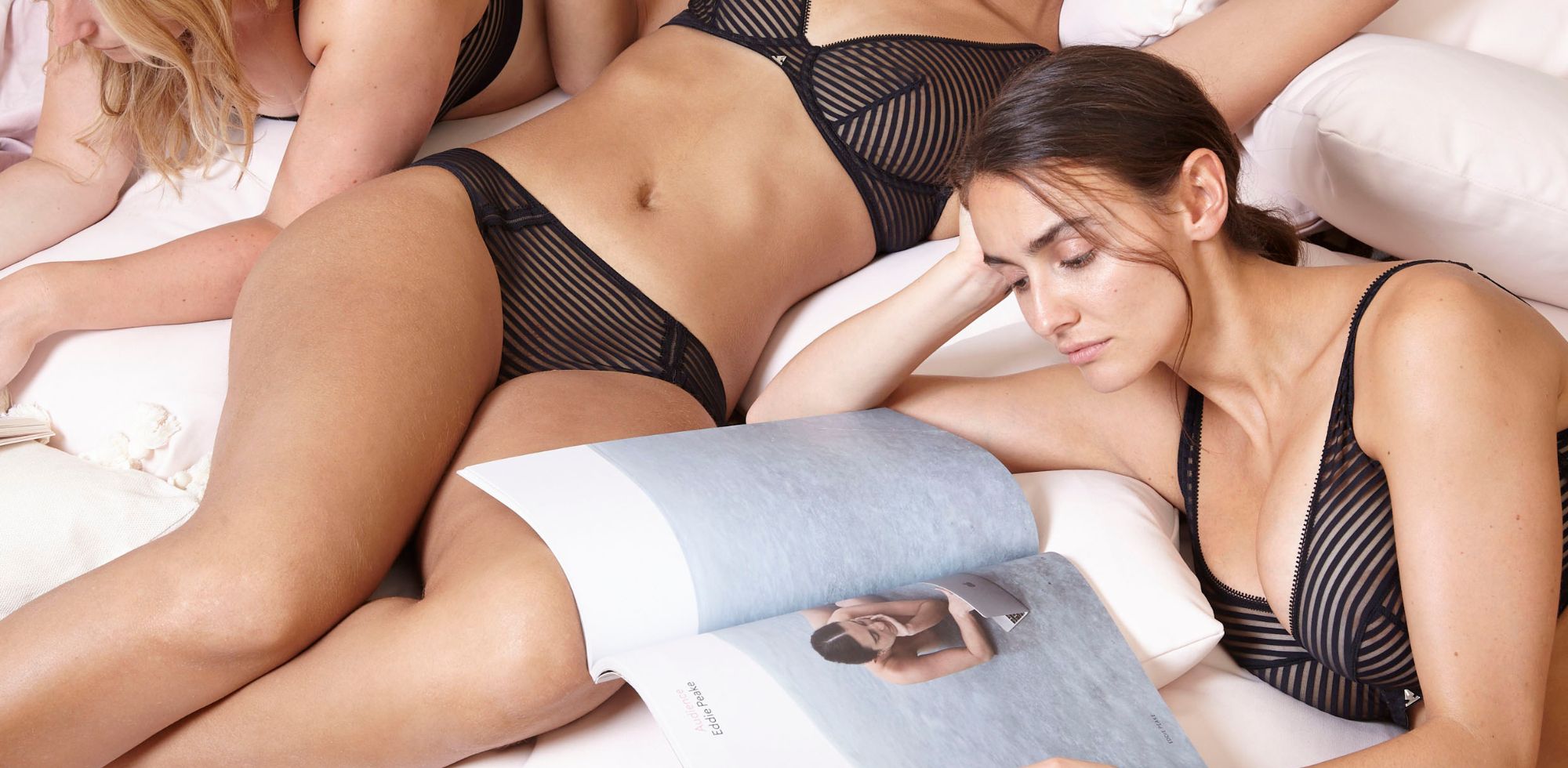By Naomi Attwood
How bras were invented and evolved to the luxury lingerie of today . . .
If you’ve ever browsed luxury lingerie brands, looked at the luxury lingerie UK market, or wondered which is the best luxury lingerie to buy, did you stop and think who created the bra as we currently know it? As inventions go, brassieres and lingerie have an incredibly long and varied history, with as many twists and turns as there are bra sizes. Below are some of the highlights of their history, but for more information, check out the The Exploress Podcast on the subject.
Ancient bras
As far back as our knowledge of civilisations go, there’s evidence of bras. From Minoan art from the Bronze Age, to the Ancient Greeks, whose Goddess Aphrodite wore a girdle ‘into which all her charms had be wrought’ in The Iliad, to a Roman mosaic from the Villa Romana del Casale in Sicily, depicting women exercising in strapless bras and bikini briefs, and evidence of strophiums; a linen or leather band folded and tucked around the chest. Over in India, the first mention of the bra dates back to 1st Century CE, and in China, several bra solutions found in the Han Dynasty in 200 CE, similar to breast-binding garments.
Medieval bras
Linen garments found dating back to between 1390 and 1485 – appeared surprisingly like modern bras, featuring cups sewn into cropped tank top garments, while literature from 1650 describes a kind of ‘breast bags’ that supported and enhanced a women’s figure.
Corsets
The era of the corset lasted from the Renaissance through to the 20th Century, initially an underslip with a linen bodice over it as a waist-shaper. Later known as ‘stays’ - made with whalebone, later steel, without separate cups for the breasts, they pulled in the waist, making the bosom pop out with a ‘cup runneth over’ appearance. Queen Mary II in the 1600’s and Marie Antoinette in France in the 1700’s both wore high waisted gowns with low cut, square necklines. Corsets became so tight that Victorians began to question their safety, as they restricted women’s breathing, inspiring the Suffragettes to turn the corset into a symbol of women’s oppression. Towards modern lingerie
Towards modern lingerie
The modern bra appeared towards the turn of the 20th century. In 1889, one was presented at a Paris fashion show; a body shaping tube with support for the bust.
The soutien-gorge became the bra as we know it, and the name evolved to brassiere, appearing in the Oxford English Dictionary in 1911. In 1914, Mary Phelps Jacobs patented her invention. She was a debutante who’d been inspired to create the garment to solve the problem of her gowns being ruined by the shape of bulky corsets. The prototype was handkerchiefs and ribbon fashioned into two soft cups. Compared to a corset, the feeling of wearing it was ‘delicious’ and gowns hung flatteringly. Mary filed for a patent and - changing her name to Caresse Crosby – began to market to department stores. A little bit of family history, our co-founder Abbie's best friend is the great-granddaughter of the inventive and infamous Caresse! Soon after, America entered World War I, and in 1917, the government advised women not to buy steel-banded corsets to save metal for the war effort to which women also contributed by working in the factories. This saved enough steel to build two entire battleships. Having won the war, no women wanted to go back into such restrictive garments. Women working outside the home and playing sports, wanted lighter, more comfortable and affordable attire, although still wanted bust support.
Soon after, America entered World War I, and in 1917, the government advised women not to buy steel-banded corsets to save metal for the war effort to which women also contributed by working in the factories. This saved enough steel to build two entire battleships. Having won the war, no women wanted to go back into such restrictive garments. Women working outside the home and playing sports, wanted lighter, more comfortable and affordable attire, although still wanted bust support.
1920’s fashion centred around ‘la garconne’, or a boyish figure. Some bound their breasts in strips of fabric, while styles of bras, bandeaus and corselets multiplied. Recently available fabric, rayon, was popular and new dyes allowed increased colour options.
In 1929 the Maidenform brassiere arrived with two distinct cups. This heralded also the advent of the cup size system, and A, B, C, D cups were born – originally defined by weight in ounces. In the 1930s, adjustable elastic straps, eye hooks and eventually underwires all became popularised, the latter more so after WWII had ended, and metal was no longer in short supply. In the post war era, flat-chested fashion became a thing of the past and bountiful bosoms became the look to embody.
Bullet bras In the 1940’s, Hollywood star, Jane Russell modelled an ‘aerodynamic’ undergarment in the film The Outlaw. This was also the decade when Frederick’s of Hollywood launched a front fastening bra and the first padded, push-up cups. Marylin Monroe popularised the ‘bullet bra’ that defined the 1950’s and 60’s. Worn by working women everywhere, it separated horizontal, pointy breasts that protruded from their tight, knitted sweaters.
In the 1940’s, Hollywood star, Jane Russell modelled an ‘aerodynamic’ undergarment in the film The Outlaw. This was also the decade when Frederick’s of Hollywood launched a front fastening bra and the first padded, push-up cups. Marylin Monroe popularised the ‘bullet bra’ that defined the 1950’s and 60’s. Worn by working women everywhere, it separated horizontal, pointy breasts that protruded from their tight, knitted sweaters.
Modern silhouettes
The ideal for women’s figures switched again in the 1970’s when hippy culture prevailed and it was fashionable not to wear a bra. The no-bra bra became a handy layer between skin and clothing but deliberately did not enhance your shape.
Sports bras rose to popularity when Lisa Lindahl and her friends Hinda Miller and costume designer, Polly Palmer Smith, who were joggers - created a bra to run in. Inspired by jockstraps – and Christened the ‘jogbra’; it was the forerunner of all sports bras today. Their Youtube mini documentary is a great watch!
Beija London's designer Abbie's ethos is to stretch her vision of modern lingerie design, that honours the constructional wisdom of the past paired with modern and laid back sexuality.
Shop Beija's all time classic, the bestselling Waves.  Sign up for our newsletter here! And, feel welcome to email us at fitexperts@beija.london for bra fit, styling and gifting advice.
Sign up for our newsletter here! And, feel welcome to email us at fitexperts@beija.london for bra fit, styling and gifting advice.

